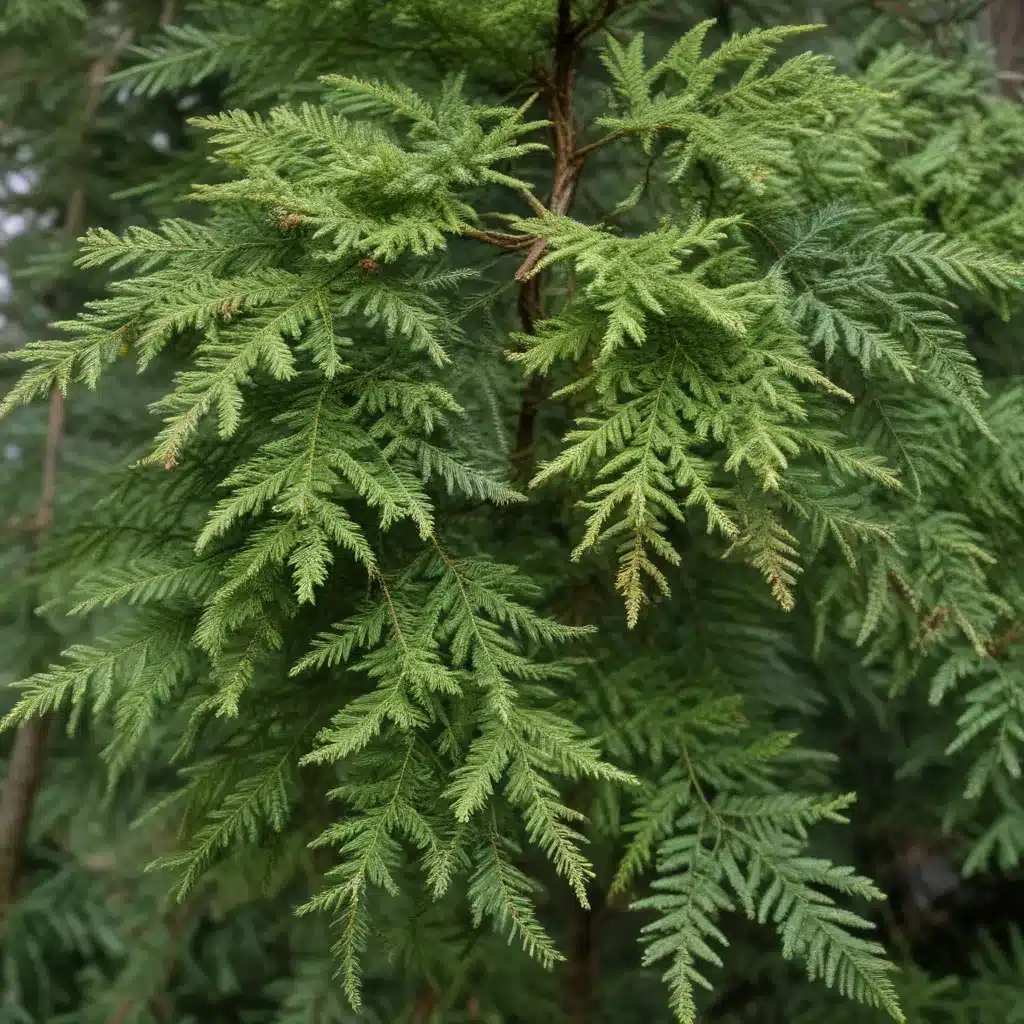
Exploring the Exquisite Elegance of the Enchanting Eastern Hemlock
The Eastern Hemlock (Tsuga canadensis) is a captivating coniferous tree native to the eastern regions of North America. With its graceful, feathery foliage and distinctive pyramidal silhouette, the Eastern Hemlock commands attention in both natural and cultivated landscapes. As a keystone species in the forests of the Appalachian Mountains, this evergreen giant plays a vital role in maintaining the delicate ecological balance of its native habitats. Yet, beyond its ecological importance, the Eastern Hemlock also holds a special place in the hearts and minds of those who appreciate the tree’s singular beauty and rich cultural heritage.
The Hemlock Tree
Botanical Characteristics: The Eastern Hemlock is an evergreen conifer belonging to the Tsuga genus, which is part of the larger Pinaceae family. Mature trees can reach heights of 40 to 100 feet, with a trunk diameter of 1 to 4 feet. The distinctive flat, soft needles are dark green on the upper surface and pale green or white on the underside, creating a captivating two-toned effect. Small, inconspicuous cones, typically less than an inch in length, develop on the branches.
Habitat and Distribution: The Eastern Hemlock is native to the eastern United States and Canada, thriving in the cool, moist environments of the Appalachian Mountains and the northeastern coastal regions. These trees prefer well-drained, acidic soils and often grow in association with white pine, red oak, and maple species. The Eastern Hemlock’s natural range extends from Maine to northern Georgia and as far west as Minnesota.
Ecological Significance
Role in Forest Ecosystems: As a keystone species, the Eastern Hemlock plays a vital role in maintaining the delicate balance of forest ecosystems. These trees provide crucial shade and shelter for a diverse array of understory plants, creating a microclimate that supports a rich community of flora and fauna. The dense, evergreen foliage intercepts rainfall, moderating the flow of water through the ecosystem and preventing soil erosion.
Importance for Wildlife: The Eastern Hemlock’s dense canopy and thick understory offer valuable habitat for a wide range of wildlife species. The tree’s soft, pendulous branches provide nesting sites for birds, while its nutritious seeds and foliage serve as a food source for small mammals, such as squirrels and chipmunks. Larger animals, like deer and black bears, often seek refuge and sustenance within the hemlock’s sheltering embrace.
Aesthetic Appeal
Graceful Foliage: The Eastern Hemlock’s delicate, feathery foliage is a true delight to behold. The soft, flat needles create a lush, cascading appearance that is both visually appealing and tactilely pleasing. The tree’s pyramidal silhouette and pendulous branching habit further enhance its graceful, elegant form.
Ornamental Landscape Value: Due to its striking appearance and adaptability to a variety of growing conditions, the Eastern Hemlock is a highly sought-after ornamental tree for both residential and commercial landscapes. Its year-round evergreen foliage and dense, pyramidal habit make it an excellent choice for screening, hedging, and specimen plantings. Numerous cultivars have been developed to showcase the tree’s diverse growth habits and foliage characteristics.
Historical and Cultural Associations
Native American Uses: The Eastern Hemlock has long held a place of importance in the traditions and practices of various Native American tribes. The inner bark of the tree was used as a food source, while the wood was valued for its durability and workability in the creation of canoes, tools, and shelters. Native Americans also recognized the medicinal properties of the hemlock, utilizing its astringent bark and needles for a variety of remedies.
Artistic Representations: The Eastern Hemlock’s graceful, evergreen presence has inspired artists and poets throughout history. The tree’s majestic form and serene, woodland setting have been immortalized in paintings, photographs, and literary works, capturing the essence of the natural world and the human connection to it.
Conservation Efforts
Threats to Hemlock Populations: Despite its ecological and cultural significance, the Eastern Hemlock faces several threats to its long-term survival. The Hemlock Woolly Adelgid, an invasive insect from Asia, has devastated hemlock populations across the eastern United States, leading to widespread decline and mortality. Additionally, climate change, habitat fragmentation, and unsustainable logging practices have all contributed to the declining health and abundance of this iconic tree.
Preservation Initiatives: In response to these threats, various conservation organizations and government agencies have implemented initiatives to protect and restore Eastern Hemlock populations. These efforts include monitoring and treating infested trees, reforestation programs, and educational outreach to raise awareness about the importance of this keystone species. TriCounty Tree Care, for example, offers comprehensive hemlock care services to help homeowners and land managers maintain the health and vitality of their hemlock trees.
Hemlock Varieties and Cultivars
Native Eastern Hemlock: The Eastern Hemlock (Tsuga canadensis) is the most widely recognized and prevalent species within the genus. This majestic tree is known for its graceful, pyramidal form and dense, evergreen foliage.
Ornamental Cultivars: In addition to the native Eastern Hemlock, numerous cultivars have been developed to showcase the tree’s diverse growth habits and foliage characteristics. These include compact, dwarf varieties, weeping forms, and selections with unique needle colors, such as golden, blue-green, or variegated foliage.
The Eastern Hemlock’s captivating beauty, ecological significance, and rich cultural history make it a truly enchanting tree. Whether admiring its graceful silhouette in a natural setting or incorporating it into a carefully curated landscape, this evergreen giant continues to captivate and inspire those who appreciate the wonders of the natural world. As we work to preserve and protect this iconic species, the Eastern Hemlock will endure as a testament to the beauty and resilience of our shared environment.


